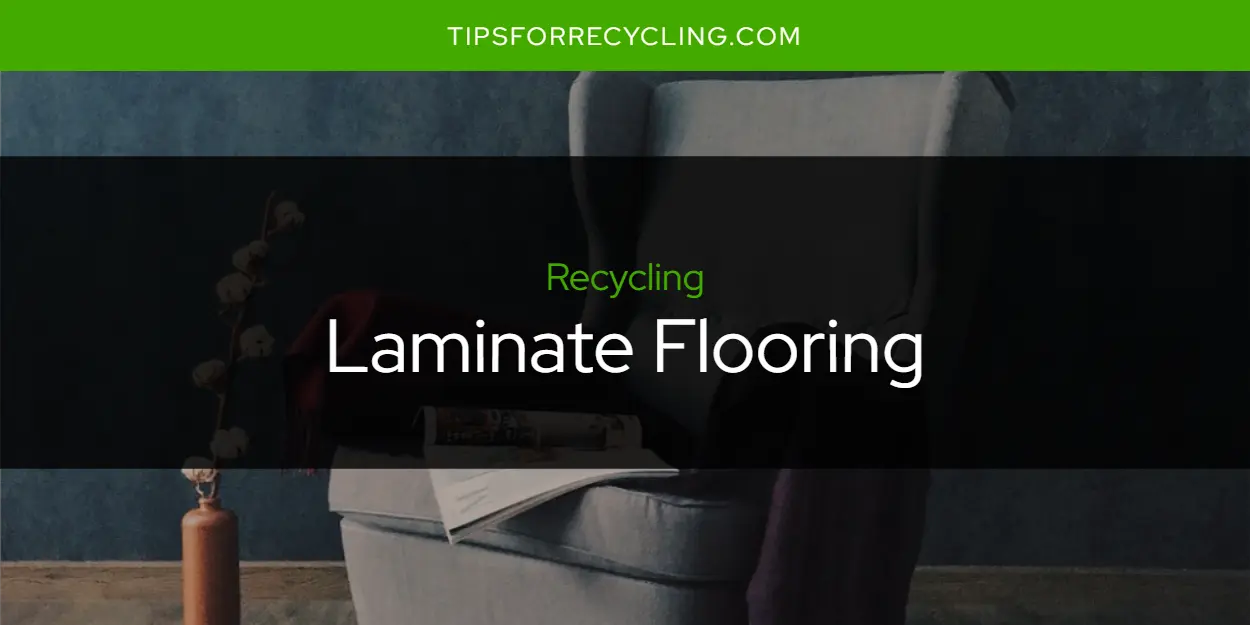Is Laminate Flooring Recyclable?

The short answer is yes. Laminate flooring can be recycled, but it must be done correctly in order to ensure that it is properly disposed of. There are various organizations and companies that offer laminate flooring recycling, so you may want to do some research before deciding on a collection center or disposal method.
See the below map for locations where you can recycle laminate flooring.
Yes, you can make money recycling laminate floorings. Some companies will offer cash for the recovered product and others may provide store credits or other incentives for successful recycling efforts. However, it's important to note that not all laminate floorings are accepted for recycling and the amount of money you can make varies by company.
Similarly, see if you can recycle vinyl flooring.
Recycling laminate flooring has numerous benefits beyond making money from it. First, it helps reduce waste in landfills and conserve natural resources by giving old materials a new life. Additionally, it reduces air pollution since there will be fewer emissions from producing new products with virgin materials. It also gives homeowners a way to save money on replacing their floors while still being environmentally responsible.
Similarly, see if you can recycle laminate.
There are several options available when looking for a collection center for laminate flooring. The first place to check would be your local landfill or town hall as they often have comprehensive lists of disposal centers that accept certain types of waste material including laminate flooring. Alternatively, many home improvement stores like Home Depot and Lowe’s offer drop-off services where customers can take their unwanted materials for disposal or recycling at no charge. Finally, there are online marketplaces like Craigslist where individuals can post their used items for sale or donate them to those in need at no cost whatsoever.
Similarly, see if you can recycle vinyl plank flooring.
Removing laminate flooring can be tricky if you don't know what you're doing, so it's important to follow the proper steps when taking up the material before disposing or donating it elsewhere. First, remove any furniture from the room as this will give you more space to work with during the removal process. Secondly, use an oscillating tool or pry bar to carefully lift any remaining planks off the subfloor without breaking them into smaller pieces; these tools are available at most local home improvement stores or online retailers like Amazon. Finally, check each plank individually before packaging them together in order to ensure they don't contain any nails or staples which could damage other equipment during transportation and sorting processes at recycling centers.
Similarly, see if you can recycle laminated paper.
Once you've removed all of the planks from your space, you'll need to properly dispose of them in order for them to be recycled correctly. The first step is finding out if your local landfill accepts laminated wood products - if not then contact your municipality about other options such as donation centers or private haulers that specialize in hazardous waste management and disposal services (hhw). Once you've located an appropriate facility then simply package up all planks into cardboard boxes using tape and labels so that workers know exactly what type of material they're dealing with upon arrival!
Similarly, see if you can recycle aluminum foil.
Recycling laminate floorings has numerous positive impacts on our environment - not only does it reduce landfill waste but also decreases pollution caused by manufacturing new items with virgin materials while providing green jobs across the country! Additionally, by reusing existing resources we help conserve our natural habitats which helps preserve biodiversity in areas where forests have been cleared due to development projects or agricultural activities such as mono-cropping agriculture which affects wildlife populations dramatically over time; this allows us all enjoy nature’s beauty without sacrificing its integrity..